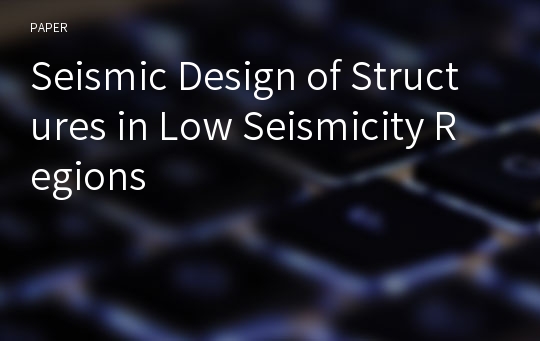Seismic Design of Structures in Low Seismicity Regions
* 본 문서는 배포용으로 복사 및 편집이 불가합니다.
서지정보
ㆍ발행기관 : 한국지진공학회
ㆍ수록지정보 : Jorunal of the Earthquake Engineering Society of Korea / 11권 / 4호
ㆍ저자명 : Lee, Dong-Gu, Cho, So-Hoon, Ko, Hyun
ㆍ저자명 : Lee, Dong-Gu, Cho, So-Hoon, Ko, Hyun
영어 초록
Seismic design codes are developed mainly based on the observation of the behavior of structures in the high seismicity regions where structures may experience significant amount of inelastic deformations and major earthquakes may result in structural damages in a vast area. Therefore, seismic loads are reduced in current design codes for building structures using response modification factors which depend on the ductility capacity and overstrength of a structural system. However, structures in low seismicity regions, subjected to a minor earthquake, will behave almost elastically because of the larger overstrength of structures in low seismicity regions such as Korea. Structures in low seismicity regions may have longer periods since they are designed to smaller seismic loads and main target of design will be minor or moderate earthquakes occurring nearby. Ground accelerations recorded at stations near the epicenter may have somewhat different response spectra from those of distant station records. Therefore, it is necessary to verify if the seismic design methods based on high seismicity would he applicable to low seismicity regions. In this study, the adequacy of design spectra, period estimation and response modification factors are discussed for the seismic design in low seismicity regions. The response modification factors are verified based on the ductility and overstrength of building structures estimated from the farce-displacement relationship. For the same response modification factor, the ductility demand in low seismicity regions may be smaller than that of high seismicity regions because the overstrength of structures may be larger in low seismicity regions. The ductility demands in example structures designed to UBC97 for high, moderate and low seismicity regions were compared. Demands of plastic rotation in connections were much lower in low seismicity regions compared to those of high seismicity regions when the structures are designed with the same response modification factor. Therefore, in low seismicity regions, it would be not required to use connection details with large ductility capacity even for structures designed with a large response modification factor.참고 자료
없음태그
"Jorunal of the Earthquake Engineering Society of Korea"의 다른 논문
 Development of Site Classification System and Modificat..13페이지
Development of Site Classification System and Modificat..13페이지 Physical Modeling of Soil-Structure Systems Response to..9페이지
Physical Modeling of Soil-Structure Systems Response to..9페이지 Progress of Applications and Studies on Earthquake Resi..10페이지
Progress of Applications and Studies on Earthquake Resi..10페이지 Prediction of Strong Ground Motion in Moderate-Seismici..7페이지
Prediction of Strong Ground Motion in Moderate-Seismici..7페이지 A Simplified Procedure for Performance-Based Design11페이지
A Simplified Procedure for Performance-Based Design11페이지

























